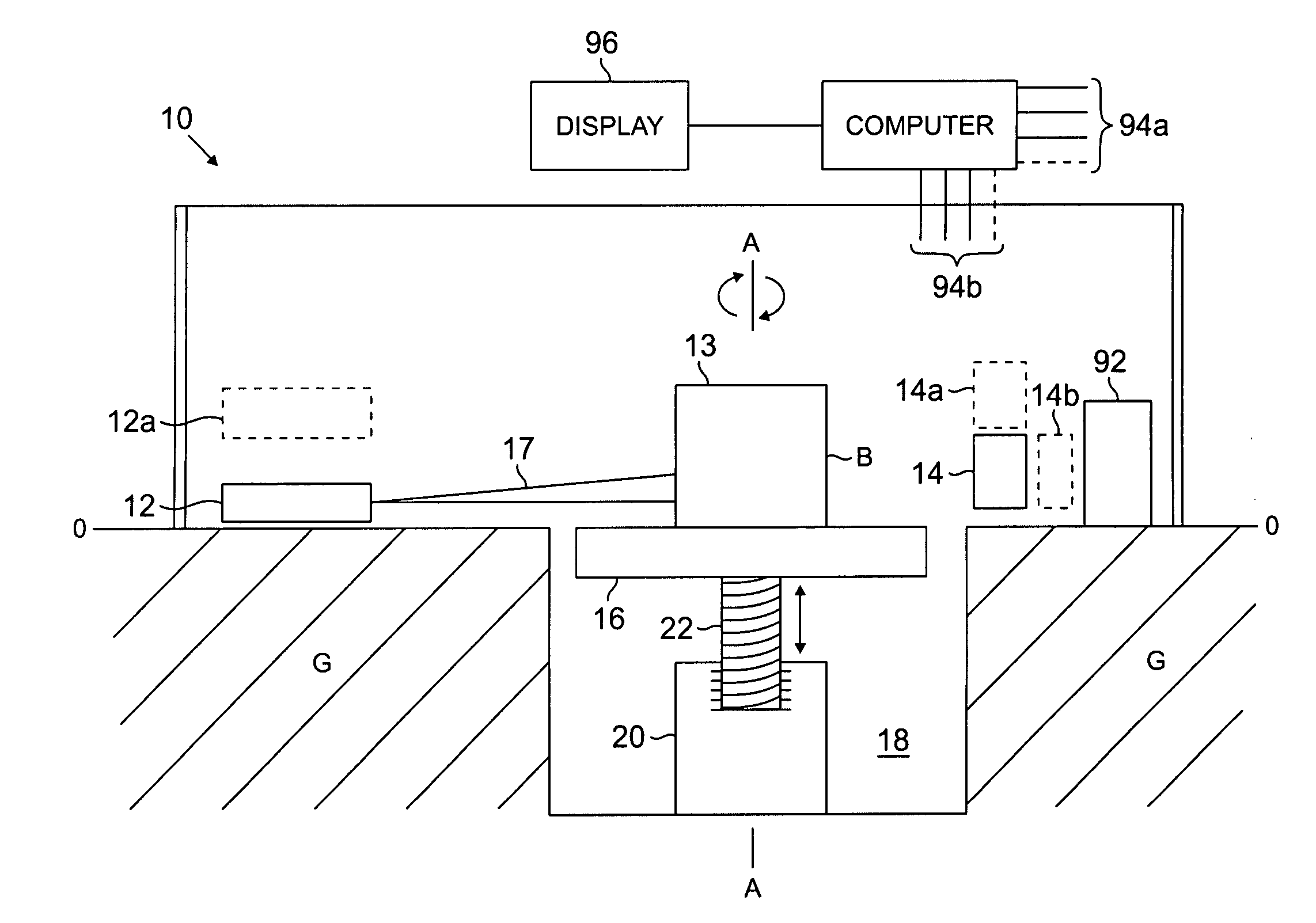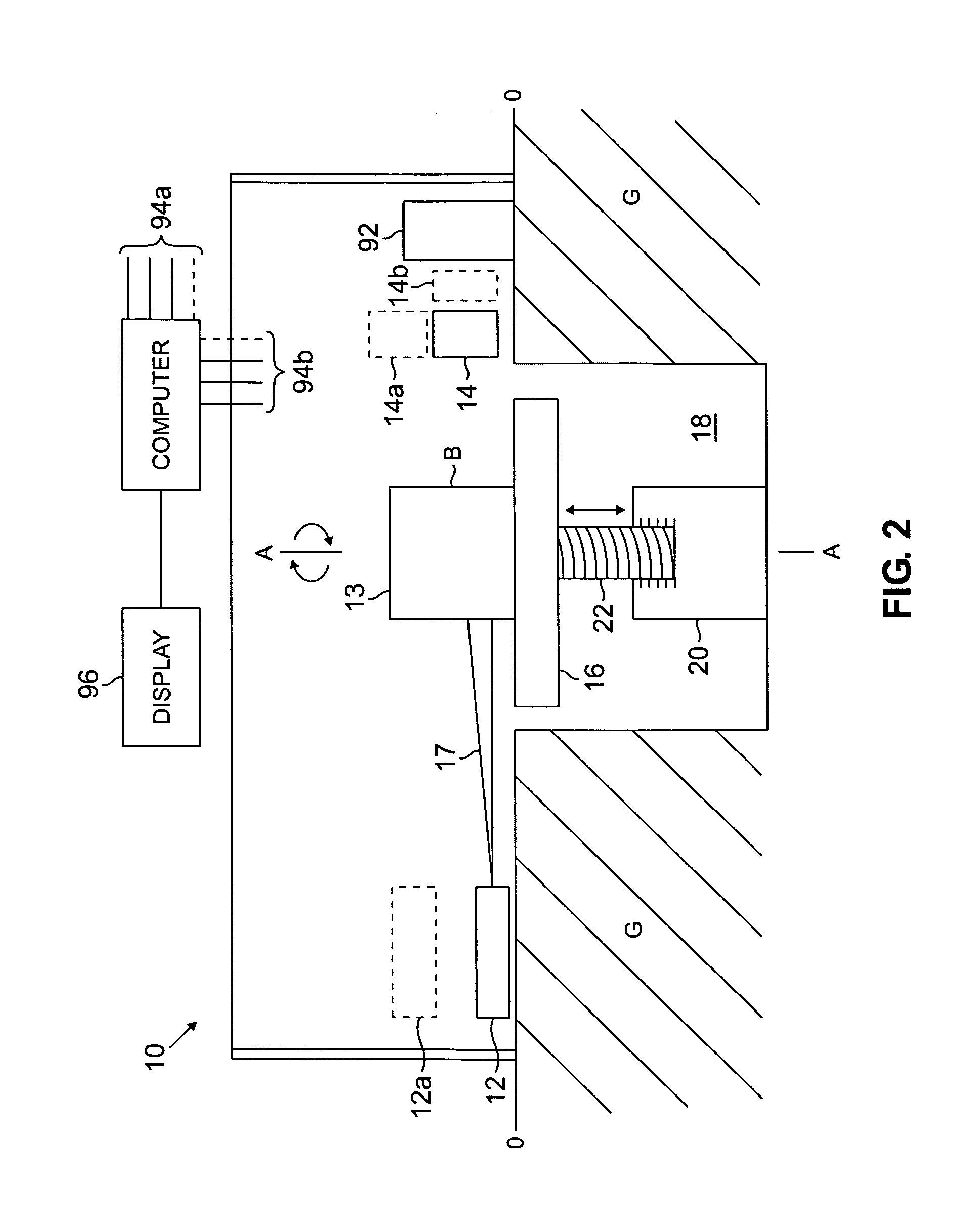Radiation scanning units including a movable platform
a scanning unit and moving platform technology, applied in the direction of material analysis using wave/particle radiation, instruments, applications, etc., can solve the problems of difficult to distinguish between, difficult to identify dangerous items, and difficulty in identifying thin sheets of explosive materials
- Summary
- Abstract
- Description
- Claims
- Application Information
AI Technical Summary
Benefits of technology
Problems solved by technology
Method used
Image
Examples
Embodiment Construction
[0040]FIG. 1 is a side view of a scanning unit 10 according to one embodiment of the invention. In this embodiment, the scanning unit 10 comprises a source of radiation 12, such as X-ray radiation, to irradiate an object 13 being scanned, a detector 14 to detect radiation transmitted through the object 13 and a rotating / vertically displaceable platform 16 to support and position the object during scanning. The rotating / vertically displaceable platform 16 is between the source 12 and the detector 14. The source 12, along with suitable collimation, may emit a horizontal beam 17 of radiation and the detector 14 may extend horizontally. The horizontally extending beam may be a cone beam, as shown in FIG. 1, or a fan beam, for example. The object 13 may be a large object, such as a cargo conveyance (cargo container and pallets, for example). The object 13 may also be a smaller object, such as a piece of luggage or a carry-on bag, for example.
[0041]In this embodiment, the source 12 and th...
PUM
| Property | Measurement | Unit |
|---|---|---|
| width | aaaaa | aaaaa |
| thickness | aaaaa | aaaaa |
| average energy | aaaaa | aaaaa |
Abstract
Description
Claims
Application Information
 Login to View More
Login to View More - R&D
- Intellectual Property
- Life Sciences
- Materials
- Tech Scout
- Unparalleled Data Quality
- Higher Quality Content
- 60% Fewer Hallucinations
Browse by: Latest US Patents, China's latest patents, Technical Efficacy Thesaurus, Application Domain, Technology Topic, Popular Technical Reports.
© 2025 PatSnap. All rights reserved.Legal|Privacy policy|Modern Slavery Act Transparency Statement|Sitemap|About US| Contact US: help@patsnap.com



